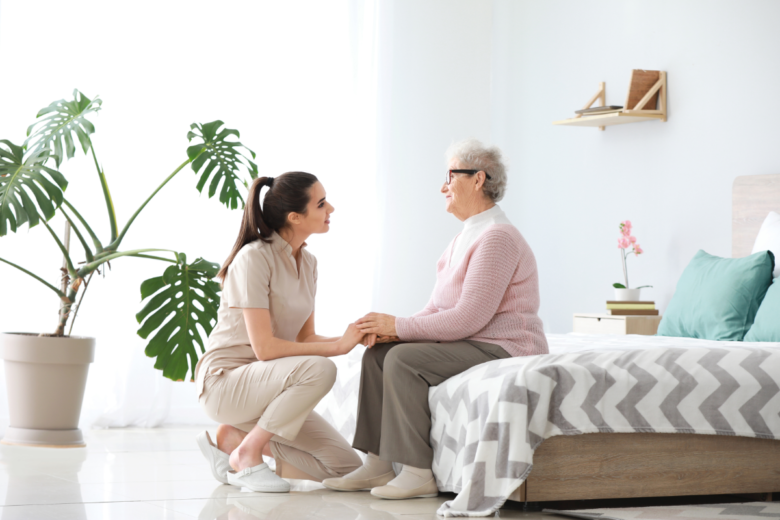As people age, they become more susceptible to falls, which can result in serious injuries. In fact, falls are the leading cause of injury-related deaths among older adults. According to the Centers for Disease Control and Prevention (CDC), one in four Americans aged 65 and older falls each year, and falls are responsible for more than 2.8 million injuries treated in emergency departments annually.
To prevent falls, it is important to make home safety modifications that cater to the needs of seniors. This can include installing grab bars, ensuring proper lighting, and removing tripping hazards. However, not all seniors are aware of the potential dangers in their homes, and may not know how to address them. That’s where expert advice comes in. With the help of professionals, seniors can learn how to enhance their home safety and reduce their risk of falling.
Understanding Fall Risks in Seniors
As people age, the risk of falling increases. According to the Centers for Disease Control and Prevention (CDC), falls are the leading cause of injury and death among older adults. Understanding the common causes of falls and the physical and cognitive risk factors can help seniors and their caregivers take steps to prevent falls.
Common Causes of Falls
Falls can happen for a variety of reasons, but some of the most common causes include:
- Environmental hazards, such as uneven flooring, poor lighting, and cluttered walkways
- Medications that can cause dizziness, confusion, or weakness
- Chronic health conditions, such as arthritis, diabetes, or vision problems
- Poor balance or coordination
- Foot problems, such as pain, numbness, or weakness
Physical and Cognitive Risk Factors
There are several physical and cognitive risk factors that can increase the risk of falling in seniors. These include:
- Muscle weakness or loss of flexibility
- Poor vision or hearing
- Chronic pain or fatigue
- Cognitive impairment or dementia
- Depression or anxiety
- History of falls or fear of falling
By understanding the common causes of falls and the physical and cognitive risk factors, seniors and their caregivers can take steps to prevent falls and enhance home safety. This may include making modifications to the home environment, such as removing hazards and improving lighting, as well as addressing any underlying health conditions or medications that may increase the risk of falling.
Creating a Safe Living Environment
Creating a safe living environment is essential for seniors to avoid falls. Making simple modifications to the home can greatly reduce the risk of falls. Here are some tips to create a safe living environment for seniors.
Essential Home Modifications
Seniors should consider making the following home modifications to reduce the risk of falls:
- Install grab bars and handrails in the bathroom, near the toilet, and in the shower or bathtub.
- Remove tripping hazards such as loose rugs, clutter, and electrical cords.
- Ensure adequate lighting in all areas of the home, including hallways, stairs, and entryways.
- Install non-slip flooring in the bathroom and kitchen.
- Use a raised toilet seat to make it easier to sit and stand.
Choosing the Right Safety Equipment
Choosing the right safety equipment is also important to prevent falls. Seniors should consider the following safety equipment:
- Non-slip bath mats and shower chairs to prevent slips and falls in the bathroom.
- Stair lifts or ramps to make it easier to navigate stairs.
- Medical alert systems to call for help in case of an emergency.
- Properly fitting shoes with non-slip soles for better traction.
By making these simple modifications and choosing the right safety equipment, seniors can greatly reduce the risk of falls and create a safe living environment.
Preventive Measures and Best Practices
Exercise Programs to Improve Balance
One of the most effective ways for seniors to prevent falls is by improving their balance through exercise programs. Seniors can benefit from exercises that focus on balance, strength, and flexibility. Balance exercises can be as simple as standing on one foot or walking heel-to-toe. Tai chi and yoga are also excellent options for seniors to improve their balance.
Strength training exercises can help seniors build muscle, which can improve their balance and stability. Resistance bands, weights, and bodyweight exercises are all great options for strength training. Flexibility exercises can help seniors maintain their range of motion and prevent stiffness. Stretching exercises, such as yoga poses, can help seniors improve their flexibility.
Nutritional Guidelines
A balanced diet is essential for seniors to maintain their health and prevent falls. Seniors should aim for a balanced diet that includes a variety of fruits, vegetables, whole grains, lean proteins, and healthy fats. They should also drink plenty of water to stay hydrated.
Seniors should be mindful of their calcium and vitamin D intake. Calcium is essential for bone health, and vitamin D helps the body absorb calcium. Seniors can get calcium from dairy products, leafy greens, and fortified foods. Vitamin D can be obtained from sunlight, fatty fish, and fortified foods.
Seniors should also limit their alcohol intake. Alcohol can impair balance and coordination, increasing the risk of falls. It is recommended that seniors limit their alcohol intake to one drink per day.
By following these preventive measures and best practices, seniors can enhance their home safety and reduce the risk of falls.




